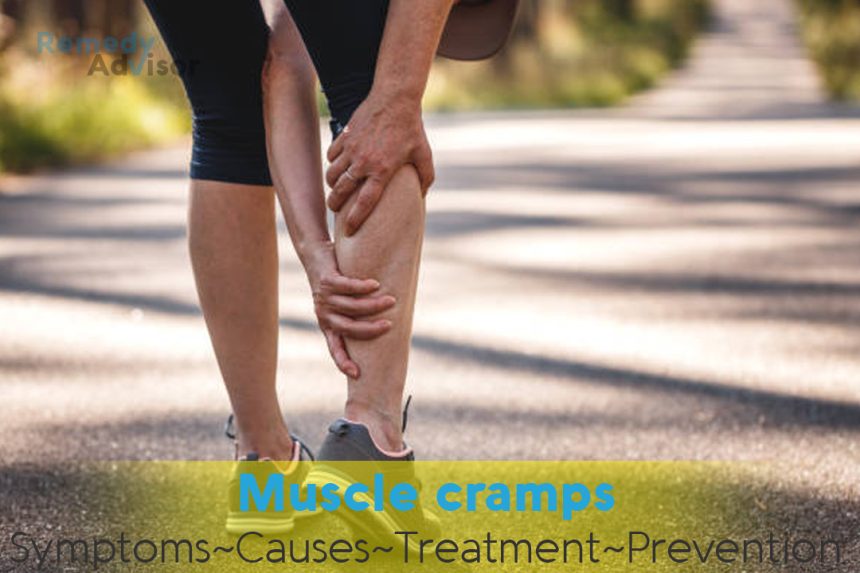What is it
Though they are harmless and do not involve injury, few things are as painful as common muscle cramps. A cramp, also called a spasm, is a sudden involuntary painful shortening of a muscle. Cramps can occur in any muscle at any time, but they most often occur in the thigh, calf, or foot and usually while you are lying in bed, playing sports, or exercising.
Athlete’s cramps occur during exercise and generally affect the hands and the large muscles of the legs and arms.
Nighttime calf cramps usually strike in bed at night as a result of contracting the calf muscles by suddenly pointing your toes or by lying with your feet in that position. (Swimmers, who kick with their toes severely sharp, can undergo calf contractions comparable to nighttime leg cramps.) One study showed that 70 percent of people over the age of 50 get this nocturnal variety. In general, as you age you may find that you experience leg cramps more frequently.
Symptoms
- A sharp, painful spasm or contraction (tightening) in a muscle. The affected muscle may feel hard to the touch (a knot).
- With more severe cramps a visible twitching of the muscle beneath the skin can occur.
What causes it
Cramps remain something of a mystery, and it’s seldom possible to pinpoint why they happen. Inactivity and activity can both cause cramps.
Athletes’ cramps occur for a number of reasons. An imbalance in the blood of minerals called electrolytes (potassium and sodium), which often results from excess sweating and dehydration may cause muscles to cramp. Another common cause is overexertion or muscle fatigue, marked by excessive tightening of the muscles and/or a buildup of lactic acid in them. Poor conditioning may also contribute to cramps.
If you exercise energetically throughout in the day, your muscles may constrict while you sleep and therefore cramp. Likewise, if you’re not familiar to them, wearing high heels may result in cramps. Also, certain medications, notably diuretics taken for hypertension, may promote cramps.
What if you do nothing
Ordinary cramps, which typically occur in the leg or foot, do no permanent harm, nor are they signs of serious underlying problems. Cramps usually last just a few minutes and clear up on their own.
Home remedies
These steps should help to quickly alleviate cramp discomfort.
Stop the cramp
For calf cramps, bend your foot by directing your toes upward. Lying down and clutching the toes and ball of your foot and dragging them toward your knee may help. At the same time, rub the muscle mildly to ease it fully.
For hamstring cramps, extend your leg straight out, gently stretching the quadriceps and hamstring muscles. Massage the sore area with your fingers.
Ice the muscle
Ice packs can reduce blood flow to the muscle and thus relax them.
Walk it off
Putting your full weight on your heels may help stop cramping in your leg.
Drink up
Drinking water helps correct any fluid loss from excessive sweating, a common occurrence during a long athletic event in the heat. If a mineral imbalance too little potassium or sodium, for instance is contributing to the cramping, an electrolyte-replacing sports drink may help. Most people, though, can get adequate sodium and potassium from their diet; supplements are not necessary.
Prevention
Change your sleep habits. If you seem predisposed to nocturnal leg cramps, don’t point your toes while stretching, and try not to sleep with your toes pointed. Sleep on your side, and don’t tuck in your blankets and sheets too tightly, since these can bend your toes downward. An electric blanket will keep your muscles warm and may prevent cramping.
Stretch spells relief
Sometimes cramps are unavoidable, but a regular program of calf- stretching exercises to lengthen the muscles that have shortened may help if you’re prone to calf cramps. Stand about three feet from a wall and lean into it for 15 to 20 seconds, keeping your forearms against the wall and your heels on the floor. Placing the ball of your rear foot on a book and slowly lowering your heel will add to the stretch. Or stand with the balls of your feet on a step or curb and lower your heels for a gentle stretch (hold onto something for balance).
Do these stretches daily or as often as necessary. Good stretching times are before and after exercise and before going to bed. Bedtime stretching is important if you’re bothered by nighttime cramps.
Drink before and during exercise
In hot weather, drink at least 16 ounces of fluid two hours before exercising and four to eight ounces every 10 to 20 minutes while you exercise.
Check your medicines
Recurrent cramps may be due to a medication you’re taking. Diuretics commonly prescribed to lower blood pressure are typical offenders because they deplete the potassium in your muscles. Talk to your physician about alternative medications. In the meantime, increase your daily intake of potassium-rich foods like bananas, oranges, and potatoes.
Don’t take salt tablets
These may be counterproductive because they cause excessive amounts of water to be drawn into the stomach, which can cause dehydration, nausea, and vomiting. If you don’t get enough sodium in your diet, add some extra salt in your cooking, sprinkle it on your food, or eat salt-rich snacks such as pretzels or crackers to help restore any imbalance in your body.







